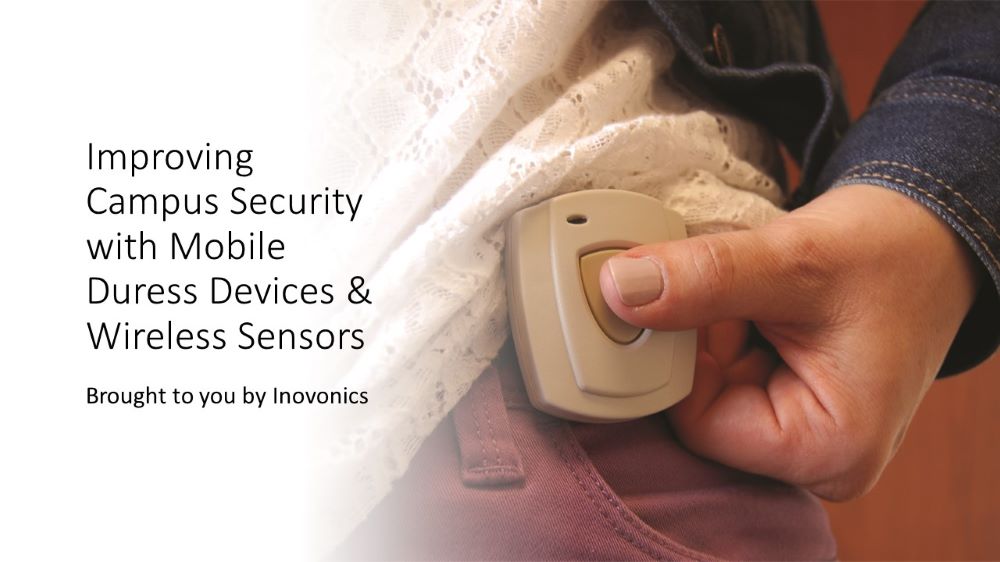As more hospital, school and university employees become concerned about their safety at work, many campuses are considering the adoption of panic buttons or mobile duress devices, which enable campus employees to summon for help when an emergency occurs.
It’s even better when these panic buttons are wireless. Mobile duress devices allow teachers, nurses, administrators, and other staff members to call for assistance from anywhere on campus, such as from the front office, a classroom, exam room, hospital emergency department, and other areas in the facility.
Some mobile duress buttons can even integrate with other systems already installed on campus, such as access control systems, video surveillance systems, intrusion alarms, and more.
To find out more about the benefits of wireless panic buttons, I spoke with Craig Dever, who is vice president of sales and marketing at Inovonics.
In our interview, Craig tells us about:
- The overall benefits and applications of wireless sensors, as well as how these sensors can improve security and safety at schools, hospitals, institutions of higher education and other organizations: 1:45
- How systems with wireless sensors, including mobile duress devices, can be integrated with other security systems, such as access control, video surveillance, intrusion, mobile duress, etc.: 4:23
- How these systems can be monitored either by onsite personnel or offsite central stations: 5:08
- The benefits of using mobile duress devices: 5:29
- The challenges associated with traditional panic alarms: 6:15
- How Inovonics’ mobile duress buttons address these challenges as well as help first responders during an emergency: 6:59
- Real-life applications of mobile duress systems in education and healthcare: 8:50
Brought to you by:








